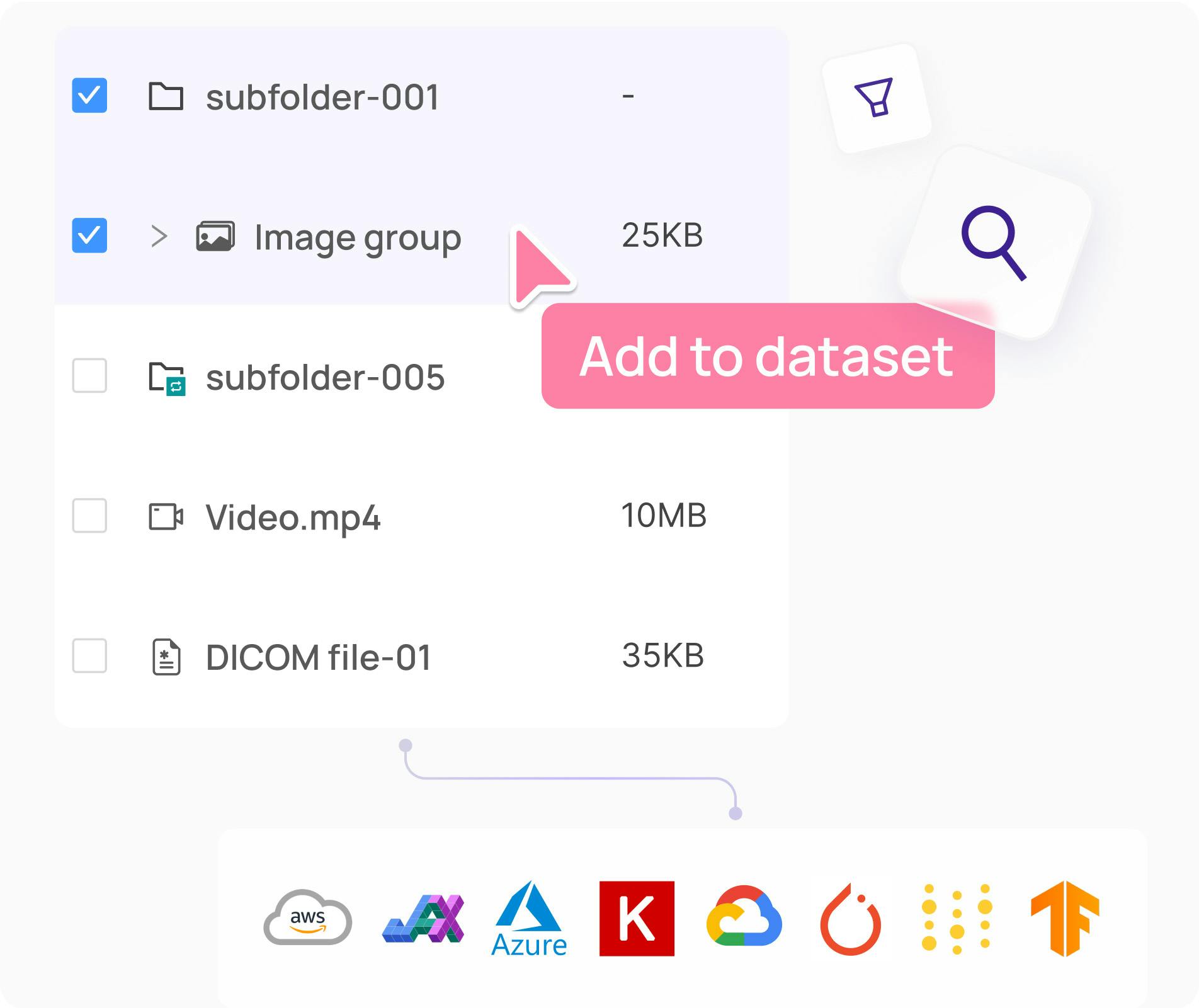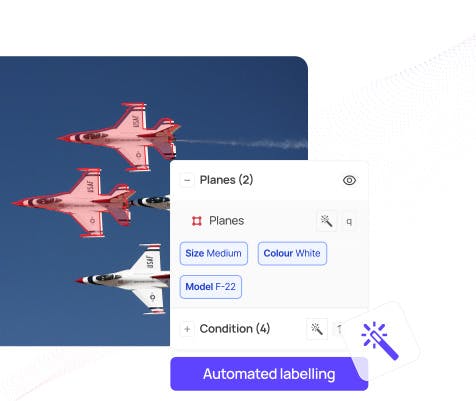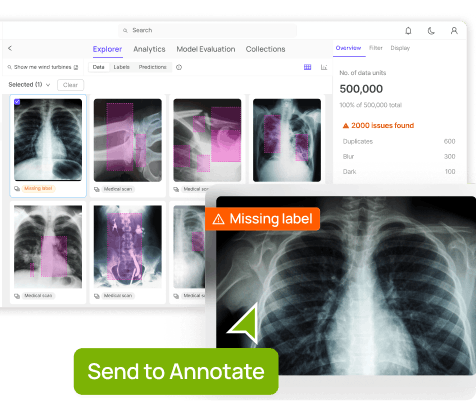Contents
Data Collection Essentials
Why Is High-Quality Data Collection Important?
How AI Uses Collected Data?
Steps in the Data Collection Process
Best Practices for High-Quality Data Collection
Data Collection Challenges
Encord for Data Collection
Data Collection: Key Takeaways
Encord Blog
Data Collection: A Complete Guide to Gathering High-Quality Data for AI Training
5 min read

Organizations today recognize data as one of their most valuable assets, making data collection a strategic priority. As generative AI (GenAI) adoption grows, the need for accurate and reliable data becomes even more critical for decision-making. With 72% of global organizations using GenAI tools to enhance their decisions, the demand for robust data collection pipelines will continue to rise.
However, accessing quality data is challenging because of its high complexity and volume. In addition, low quality data, consisting of inaccuracies and irrelevant information, can cause 85% of your AI projects to fail, leading to significant losses.
These losses may increase for organizations that rely heavily on data to build artificial intelligence (AI) and machine learning (ML) applications. Improving the data collection process is one way to optimize the ML model development lifecycle.
In this post, we will discuss data collection and its impact on AI model development, its process, best practices, challenges, and how Encord can help you streamline your data collection pipeline.
Data Collection Essentials
Data collection is the foundation of any data-driven process. It ensures that organizations gather accurate and relevant datasets for building AI algorithms. Effective data collection strategies are crucial for maintaining training data quality and reliability, particularly as more and more businesses rely on AI and analytics.
Experts typically classify data as structured and unstructured. Structured data includes organized formats like databases and spreadsheets, while unstructured data consists of images, audio, video, and text. Semi-structured data, such as JSON and XML files, falls between these categories.
Modern machine learning models involving computer vision (CV) and natural language processing (NLP) typically use unstructured data. Organizations can collect such data from various sources, including APIs, sensors, and user-generated content. Surveys, social media, and web scraping also provide valuable data for analysis.

Gathering data is the first stage in the data lifecycle, followed by storage, processing, analysis, and visualization. This highlights the importance of data collection to ensure downstream processes, such as machine learning and business intelligence, generate meaningful insights.
Poor data collection can affect the entire lifecycle, leading to inaccurate models and flawed decisions. Establishing strong quality control practices is necessary to prevent future setbacks.
Why Is High-Quality Data Collection Important?
Being the first step in the ML development process, optimizing data collection can increase AI reliability and boost the quality of your AI applications. Enhanced data collection:
- Reduces Bias: Bias in AI data can lead to unfair or inaccurate model predictions. For instance, an AI-based credit rating app may always give a higher credit score to a specific ethnic group. Organizations can minimize biases and improve fairness by ensuring diversity and representation during data collection. Careful data curation helps prevent skewed results that could reinforce stereotypes, ensuring ethical AI applications and trustworthy decision-making.
- Helps in Feature Extraction: Feature extraction relies on raw data to identify relevant patterns and meaningful attributes. Clean and well-structured data enables more effective feature engineering and allows for better model interpretability. Poor data collection leads to irrelevant or noisy features, making it harder for models to generalize to real-world use cases.
- Improves Compliance: Regulatory frameworks require organizations to collect and handle large datasets responsibly. An optimized collection process ensures compliance by maintaining data privacy, accuracy, and transparency right from the beginning. It builds customer trust and supports ethical AI development to prevent costly fines and reputational damage.
- Determines Model Performance: High-quality data directly impacts the performance of AI systems. Clean, accurate, and well-labeled data helps improve model training, resulting in better predictions and insights. Poor data quality, including missing values or outliers, can degrade model accuracy and lead to unreliable outcomes and loss of trust in the AI application.
How AI Uses Collected Data?
Let’s discuss how machine learning algorithms use collected data to gain deeper insights into the data requirements for effective ML model development.

A simple learning process of a neural network
Annotated Data Goes as Input
AI models rely on annotated data as input to learn patterns and make accurate predictions. Labeled datasets help supervised learning algorithms map inputs to outputs, improving classification and regression tasks. High-quality annotations enhance model performance, while poor labeling can lead to errors and reduce AI reliability.
Parameter Initialization
Before training begins, deep learning AI models initialize parameters such as weights and biases, often using random values or pre-trained weights. Proper initialization prevents issues like vanishing or exploding gradients, ensuring stable learning. The quality and distribution of collected data influence initialization strategies, affecting how efficiently the model learns.
Forward Pass
During the forward pass, the AI model processes input data layer by layer, applying mathematical operations to generate predictions. Each neuron in the network transforms the data using learned weights and activation functions. The quality of input data impacts how well the model extracts features and identifies meaningful patterns.
Prediction Error
Using a loss function, the model compares its predicted output with actual labels to calculate prediction error. This error quantifies how far the predictions deviate from the ground truth. High-quality training datasets reduce noise and inconsistencies. They ensure the model learns meaningful relationships rather than memorizing errors or irrelevant patterns.
Backpropagation
Backpropagation calculates gradients by propagating prediction errors backward through the network. It determines how much each parameter contributed to the error, allowing the model to adjust accordingly. Clean, well-structured data ensures stable gradient calculations, while noisy or biased data can lead to poor weight updates and slow convergence.
Parameter Updates
The model updates its parameters using optimization algorithms like stochastic gradient descent (SGD) or Adam. These updates refine the weights and biases to minimize prediction errors. High-quality data ensures smooth and meaningful updates, while poor data can introduce inconsistencies, making the learning process time-consuming and unstable.
Validation
After training, data scientists evaluate the model on a validation dataset to assess its performance on unseen data. This step helps fine-tune hyperparameters and detect overfitting. A well-curated validation set ensures a realistic assessment. In contrast, poor validation data can mislead model tuning, leading to suboptimal generalization.
Testing
The final testing phase evaluates the trained model on a separate test dataset to measure its real-world performance. High-quality test data, representative of actual use cases, ensures accurate performance metrics. Incomplete, biased, or low-quality test data can provide misleading results, affecting deployment decisions and trust in AI predictions.
Steps in the Data Collection Process
Data collection is the backbone of the entire process, from providing AI models with annotated data to conducting final model testing. Organizations must carefully design their data collection strategies to achieve optimal results. While the exact approach may vary by use case, the steps below offer a general guideline.
1. Define Objectives
Clearly defining objectives is the first step in data collection. Organizations must outline specific goals, such as improving model accuracy, understanding customer behavior, or optimizing operations. Well-defined objectives ensure data collection efforts are relevant and align with business needs.
2. Identify Data Sources
Identifying reliable data sources is crucial for collecting relevant data. Organizations should determine whether data science teams will collect data from internal systems, external databases, APIs, sensors, or user-generated content. Correctly identifying sources minimizes the risk of collecting biased data, which can skew results.
3. Choose Collection Methods
Selecting the proper data collection methods depends on the type of data, objectives, and sources. Standard methods include surveys, interviews, web scraping, and sensors for real-time data.
The choice of method affects data accuracy, completeness, and efficiency. Combining methods often yields more comprehensive and reliable datasets.
4. Data Preprocessing
Data preprocessing includes cleaning and transforming raw data into a usable format. This step includes handling missing values, removing duplicates, standardizing units, and dealing with outliers.
Proper preprocessing ensures the data is consistent, accurate, and suitable for analysis. It improves model performance and reduces the risk of inaccurate results.
5. Data Annotation
Data annotation labels raw data to provide context for AI models. This step is essential for supervised learning, where models require labeled examples to learn. Accurate annotations are crucial for training reliable models, as mistakes or inconsistencies in labeling can reduce model performance and lead to faulty predictions.
6. Data Storage
Storing collected data securely and efficiently is essential for accessibility and long-term analysis. Organizations should choose appropriate storage solutions like databases, cloud storage, or data warehouses.
Effective data storage practices ensure that large amounts of data are readily available for analysis and help maintain security, privacy, and regulatory compliance.
7. Metadata Documentation
Metadata documentation describes the collected data's context, structure, and attributes. It provides essential information about data sources, collection methods, and formats.
Proper documentation ensures data traceability and helps teams understand its usage. Clear metadata makes it easier to manage, share, and ensure the quality of datasets over time.
8. Continuous Monitoring
Quality assurance requires continuous monitoring, which includes regularly tracking the accuracy and relevance of collected data. Organizations should set up automated systems to identify anomalies, inconsistencies, or outdated information.
Monitoring ensures that data remains accurate, up-to-date, and aligned with objectives. It provides consistent input for models and prevents errors arising from outdated data.
Best Practices for High-Quality Data Collection
The steps outlined above provide a foundation for building a solid data pipeline. However, you can further enhance data management by adopting the best practices below.
- Data Diversity: Ensure the collected data is diverse and representative of all relevant variables, groups, or conditions. Diverse data helps reduce biases and leads to fairer predictions across different demographic segments or scenarios.
- Ethical Considerations: Follow ethical guidelines to protect privacy, obtain consent, and ensure fairness in data collection. You must be transparent about data usage, avoid discrimination, and safeguard sensitive information. The practice will help maintain trust and compliance with data protection regulations.
- Scalability: Design your data collection process with scalability in mind. As data needs grow, your system should be able to handle increased volumes, sources, and complexity without compromising quality.
- Collaboration: Foster collaboration across teams, including data scientists, engineers, and domain experts, to align data collection efforts with business objectives. Cross-functional communication addresses all perspectives and helps teams focus on the most valuable insight.
- Automation: Automate repetitive tasks within the data collection process to increase efficiency and reduce errors. Automated tools can handle data gathering, preprocessing, and annotation. It allows teams to focus on higher-value tasks instead of spending time on tedious procedures.
- Data Augmentation: Use data augmentation techniques to enhance existing datasets, especially when data is scarce. Generating new data variations through methods like rotation, flipping, or adding noise can improve model robustness and create more balanced datasets.
- Data Versioning: Implement data versioning to track changes and updates to datasets over time. Version control ensures reproducibility and helps prevent errors due to inconsistent data. It also facilitates collaboration and provides a clear record of data modifications.
Data Collection Challenges
Despite the abovementioned best practices, some challenges still remain. The most common issues relate to:
- Data Accessibility: Organizations often struggle with accessing the right data, especially when it is spread across multiple sources or stored in incompatible formats. The issue worsens for highly technical domains such as legal and scientific research, where finding relevant data may be challenging.
- Data Privacy: Collecting and using personal or sensitive data raises privacy concerns. Organizations must ensure compliance with data protection regulations to safeguard individuals' privacy. This is especially true for domains like healthcare, where even the slightest data breach can have severe consequences.
- Data Bias: Bias in data occurs when collected information misrepresents certain groups. Despite being careful, organizations can inadvertently introduce bias during collection, annotation, or sampling. Addressing bias is essential to developing equitable AI models and ensuring that predictions do not reinforce discriminatory practices.
- Resource Constraints: Data collection often demands significant time, expertise, and financial resources, especially with large or complex datasets. Organizations may face budgetary or staffing limitations, hindering their ability to gather data effectively.
Encord for Data Collection
You can mitigate the challenges mentioned earlier using specialized tools for handling complex AI datasets. Encord is one such solution that can help you curate extensive data.
Encord is an end-to-end AI-based multimodal data curation platform that offers robust data curation, labeling, and validation features. It can help you detect and resolve inconsistencies in your collected data to increase model training efficiency.

Key Features
- Curate Large Datasets: Encord helps you develop, curate, and explore extensive multimodal datasets through metadata-based granular filtering and natural language search features. It can help you explore multiple types, including images, audio, text, and video, and organize them according to their contents.
- Data Security: The platform adheres to globally recognized regulatory frameworks, such as the General Data Protection Regulation (GDPR), System and Organization Controls 2 (SOC 2 Type 1), AICPA SOC, and Health Insurance Portability and Accountability Act (HIPAA) standards. It also ensures data privacy using robust encryption protocols.
- Addressing Data Bias: With Encord Active, you can assess data quality using comprehensive performance metrics. The platform’s Python SDK can also help build custom monitoring pipelines and integrate them with Active to get alerts and adjust datasets according to changing environments.
- Scalability: Encord can help you overcome resource constraints by ingesting extensive multimodal datasets. For instance, the platform allows you to upload up to 10,000 data units simultaneously as a single dataset. You can create multiple datasets to manage larger projects and upload up to 200,000 frames per video at a time.
Data Collection: Key Takeaways
With AI becoming a critical component in data-driven decisions, the need for quality data collection will increase to ensure smooth and accurate workflows. Below are a few key points to remember regarding data collection.
- High-quality Data Collection Benefits: Effective data collection improves model performance, reduces bias, helps extract relevant features, and boosts regulatory compliance.
- Data Collection Challenges: Access to relevant data, bias in large datasets, privacy concerns, and resource constraints are the biggest hindrances to robust data collection.
- Encord for Data Collection and Curation: Encord’s AI-based data curation features can help you remove the inconsistencies and biases present in complex datasets.
Explore the platform
Data infrastructure for multimodal AI
Explore product
Explore our products
- AI training data consists of labeled datasets used to train machine learning models. It helps models recognize hidden data patterns to predict outcomes.
- You can collect it through surveys, web scraping, sensors, APIs, user-generated content, and existing databases.
- Best practices include ensuring data diversity, following ethical guidelines, using scalable methods, and encouraging team collaboration.
- Common challenges include data accessibility, privacy concerns, data bias, and resource constraints such as time, budget, and expertise.
- Some of the best data collection tools include Google Forms for surveys, Scrapy for web scraping, OpenCV for image data, and Apache Kafka for streaming data.


